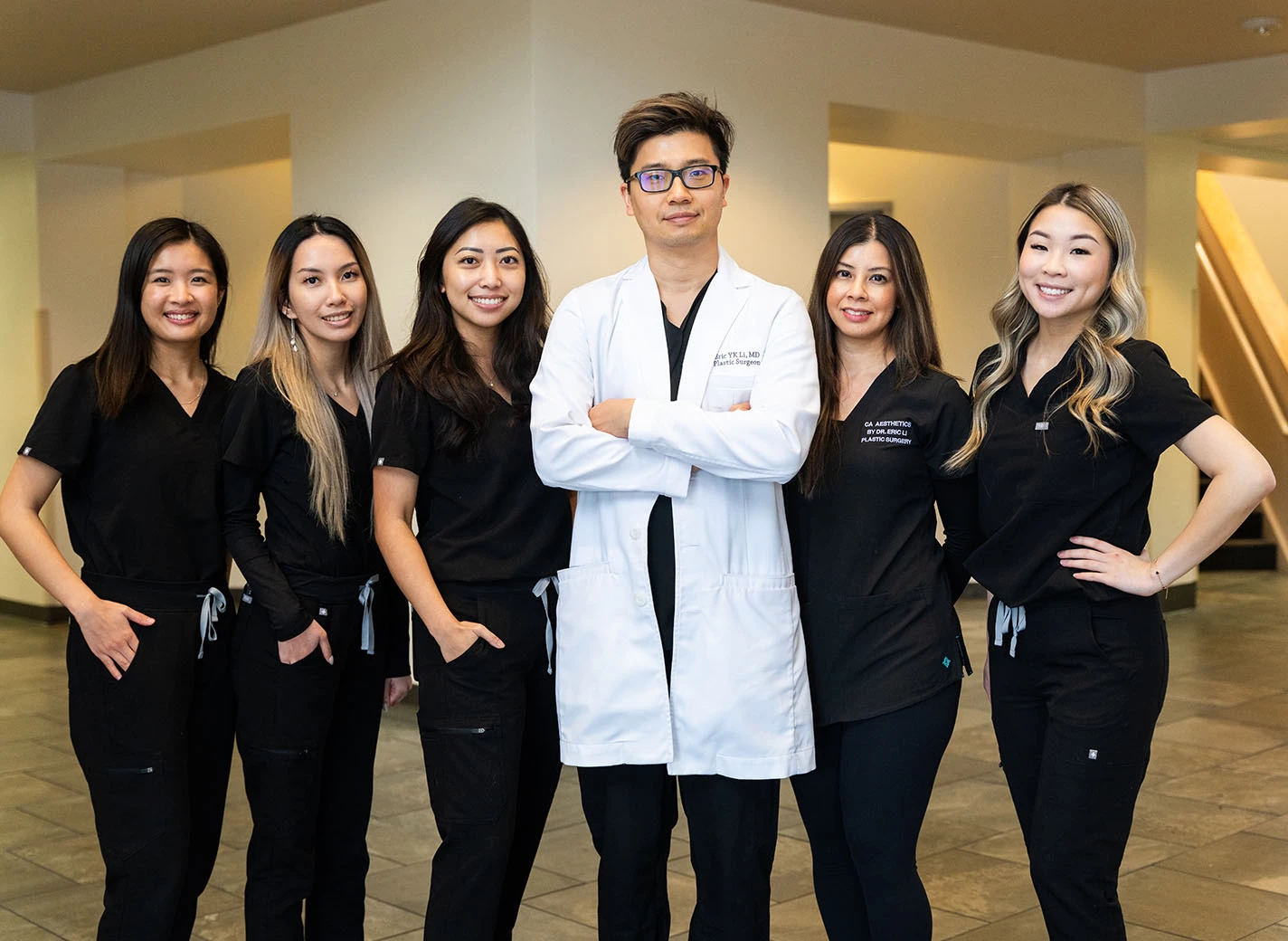Asian Eyelid Surgery is a cosmetic procedure aimed at creating an upper eyelid crease in individuals of Asian descent who either have a monolid or low/minimal eyelid crease. Some individuals may also have a more evident crease on one side and not the other and the goal is to symmetrize the upper eyelids. The creation of a fold in the upper eyelid can enhance the perceived height and brightness of the eyes and create more defined upper eyelid contours. The goal is to achieve results that complement your facial features while maintaining cultural identity and preserving ethnic characteristics.
Asian eyelid surgery can be divided into partial incisional or full incisional techniques. Each approach has its own set of advantages and disadvantages.
In the partial incisional technique, a smaller incision is made in only a portion of the upper eyelid, through which excess fat can be removed and a new crease set. This approach may be suitable for patients who wish to minimize scarring. In the full incisional technique, a complete incision is made in the upper eyelids (which is still hidden in the crease and not visible when the eyes are open). The advantage of the full incisional approach is the ability to directly manipulate any fat excess, address any eyelid droopiness (blepharoptosis), and create a durable and long-lasting eyelid crease. The disadvantage of the full incisional approach is a longer recovery time. Upper eyelid droopiness/ptosis is quite common in the Asian population, and therefore many patients may not be ideal candidates for the partial incisional technique.










